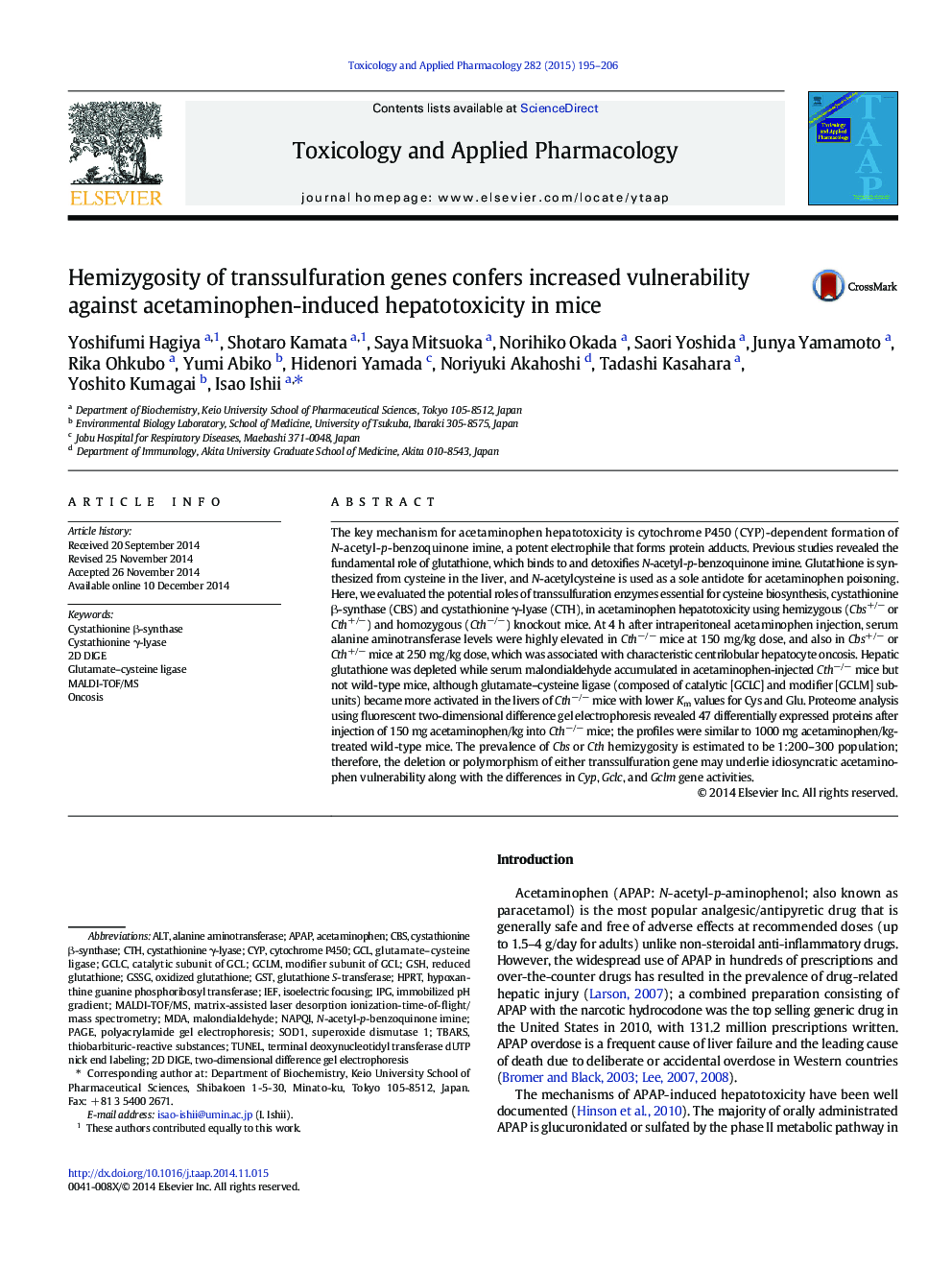| کد مقاله | کد نشریه | سال انتشار | مقاله انگلیسی | نسخه تمام متن |
|---|---|---|---|---|
| 5846115 | 1128454 | 2015 | 12 صفحه PDF | دانلود رایگان |
• Cbs+/−, Cth+/−, and especially Cth−/− mice were susceptible to APAP hepatic injury.
• Hepatic glutathione became rapidly depleted upon APAP injection in Cth−/− mice.
• Hepatic glutamate–cysteine ligase was activated by APAP injection and CTH deletion.
• 2D DIGE identified 47 differentially expressed hepatic proteins by APAP injection.
• Both transsulfuration enzymes are essential for protection against APAP injury.
The key mechanism for acetaminophen hepatotoxicity is cytochrome P450 (CYP)-dependent formation of N-acetyl-p-benzoquinone imine, a potent electrophile that forms protein adducts. Previous studies revealed the fundamental role of glutathione, which binds to and detoxifies N-acetyl-p-benzoquinone imine. Glutathione is synthesized from cysteine in the liver, and N-acetylcysteine is used as a sole antidote for acetaminophen poisoning. Here, we evaluated the potential roles of transsulfuration enzymes essential for cysteine biosynthesis, cystathionine β-synthase (CBS) and cystathionine γ-lyase (CTH), in acetaminophen hepatotoxicity using hemizygous (Cbs+/− or Cth+/−) and homozygous (Cth−/−) knockout mice. At 4 h after intraperitoneal acetaminophen injection, serum alanine aminotransferase levels were highly elevated in Cth−/− mice at 150 mg/kg dose, and also in Cbs+/− or Cth+/− mice at 250 mg/kg dose, which was associated with characteristic centrilobular hepatocyte oncosis. Hepatic glutathione was depleted while serum malondialdehyde accumulated in acetaminophen-injected Cth−/− mice but not wild-type mice, although glutamate–cysteine ligase (composed of catalytic [GCLC] and modifier [GCLM] subunits) became more activated in the livers of Cth−/− mice with lower Km values for Cys and Glu. Proteome analysis using fluorescent two-dimensional difference gel electrophoresis revealed 47 differentially expressed proteins after injection of 150 mg acetaminophen/kg into Cth−/− mice; the profiles were similar to 1000 mg acetaminophen/kg-treated wild-type mice. The prevalence of Cbs or Cth hemizygosity is estimated to be 1:200–300 population; therefore, the deletion or polymorphism of either transsulfuration gene may underlie idiosyncratic acetaminophen vulnerability along with the differences in Cyp, Gclc, and Gclm gene activities.
Figure optionsDownload high-quality image (197 K)Download as PowerPoint slide
Journal: Toxicology and Applied Pharmacology - Volume 282, Issue 2, 15 January 2015, Pages 195–206
